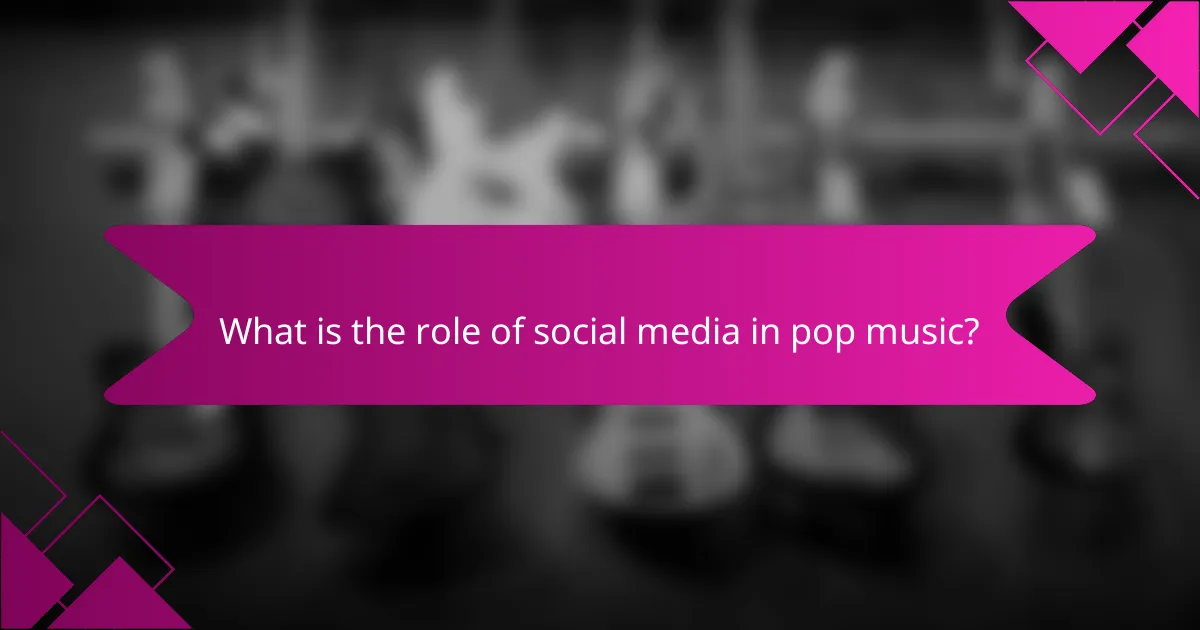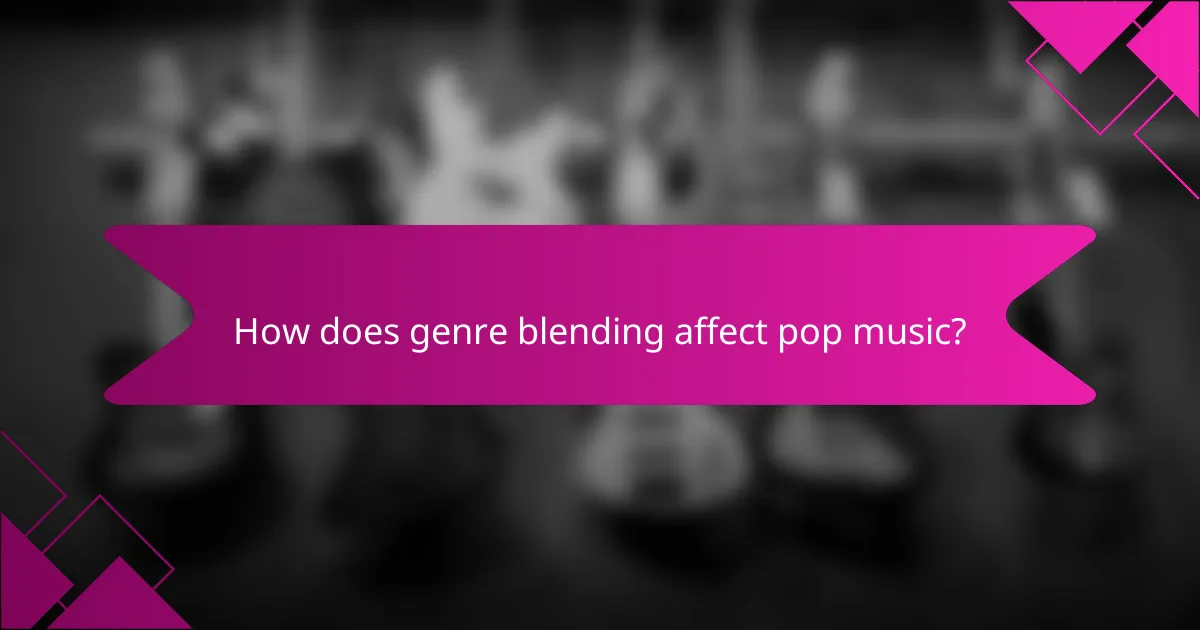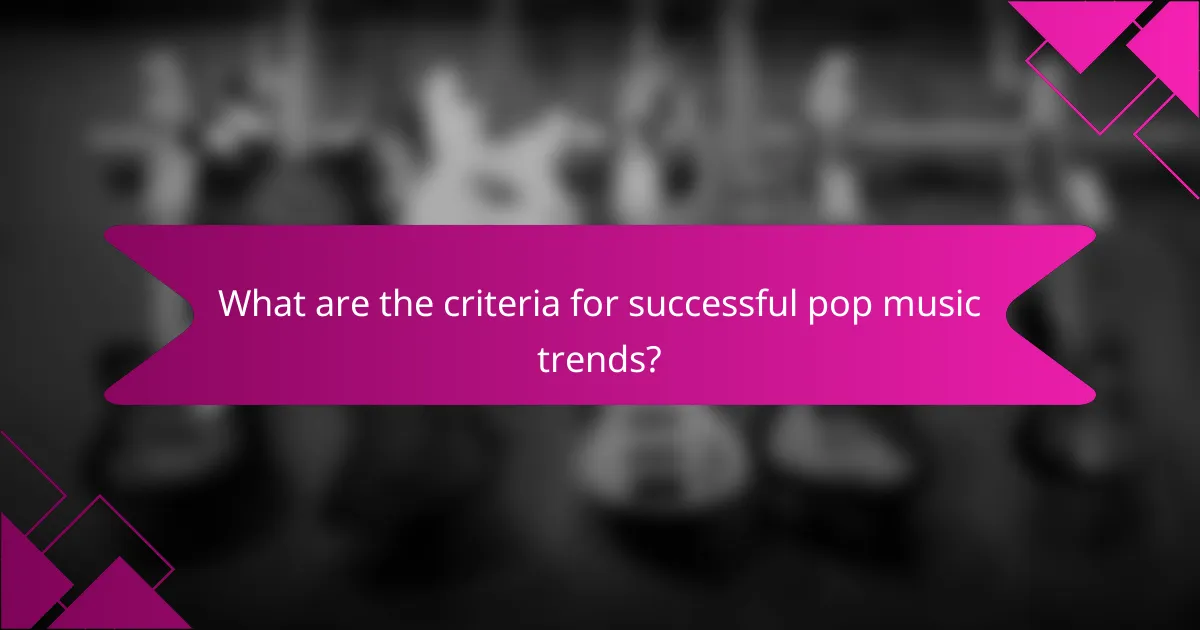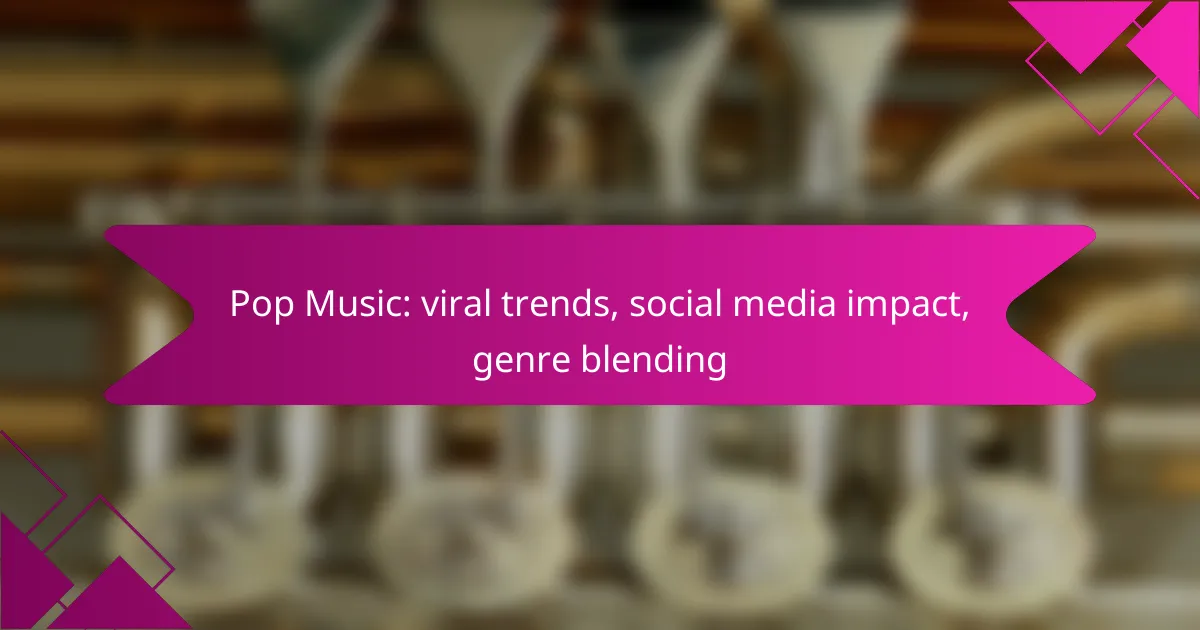Pop music today is heavily shaped by viral trends and the impact of social media, particularly through platforms like TikTok, which can catapult songs to fame almost overnight. These platforms not only amplify trends but also foster direct connections between artists and fans, creating opportunities for engagement and collaboration. Additionally, the blending of genres within pop music leads to innovative sounds that appeal to a broader audience, further transforming the musical landscape.

How do viral trends shape pop music in the US?
Viral trends significantly influence pop music in the US by dictating what songs gain popularity and how they are consumed. Social media platforms, particularly TikTok, play a crucial role in amplifying these trends, leading to rapid shifts in the music landscape.
Influence of TikTok on music charts
TikTok has transformed how songs enter and rise on music charts. Tracks that go viral on the platform often see a surge in streaming numbers, leading to higher placements on charts like Billboard Hot 100. This phenomenon can happen within days, showcasing the platform’s power in shaping musical success.
For example, songs that become associated with popular challenges or dances can experience a dramatic increase in their audience, sometimes leading to millions of streams in a short period. Artists and labels now closely monitor TikTok trends to strategize releases and promotions.
Case studies of viral hits
Several songs have exemplified the impact of viral trends, including “Old Town Road” by Lil Nas X and “Savage Love” by Jawsh 685 and Jason Derulo. “Old Town Road” gained traction through memes and user-generated content, eventually topping charts for weeks. This case illustrates how a song can evolve from a simple TikTok sound to a cultural phenomenon.
Another example is “Say So” by Doja Cat, which saw a resurgence in popularity after a dance challenge went viral. These instances highlight the potential for lesser-known artists to achieve mainstream success through viral trends.
Impact on artist promotion
Viral trends have changed the landscape of artist promotion, shifting focus from traditional media to social media engagement. Artists now leverage platforms like TikTok to connect directly with fans, often using creative content to showcase their music. This direct interaction can lead to organic growth and a loyal fan base.
Moreover, collaborations with influencers can amplify an artist’s reach, as influencers often have dedicated followings that trust their recommendations. However, artists should be cautious not to over-rely on trends, as rapid shifts can lead to short-lived fame rather than sustainable careers.

What is the role of social media in pop music?
Social media plays a crucial role in shaping pop music by facilitating the rapid spread of trends and enabling direct artist engagement with fans. Platforms like TikTok and Instagram allow artists to showcase their work, connect with audiences, and create viral moments that can propel songs to mainstream success.
Platforms driving engagement
Various social media platforms are pivotal in driving engagement within the pop music scene. TikTok, for instance, has become a launchpad for new hits, where short clips can lead to millions of streams. Instagram and Twitter also serve as vital channels for sharing behind-the-scenes content and updates, fostering a sense of community among fans.
Artists often leverage these platforms to create interactive content, such as challenges or polls, encouraging fans to participate actively. This engagement not only boosts visibility but also helps artists gauge audience reactions in real-time.
Artist-fan interaction dynamics
The dynamics of artist-fan interaction have transformed significantly due to social media. Artists can now communicate directly with their followers, responding to comments and sharing personal stories, which humanizes them and strengthens fan loyalty. This direct line of communication can lead to a more devoted fanbase, as fans feel more connected to the artist’s journey.
However, artists must navigate the fine line between engagement and oversharing. While transparency can build trust, it can also lead to scrutiny and pressure. Maintaining a balance is essential for sustaining a positive relationship with fans while protecting personal boundaries.

How does genre blending affect pop music?
Genre blending significantly influences pop music by creating innovative sounds that attract diverse audiences. This fusion allows artists to experiment with different styles, leading to fresh trends and expanding the genre’s reach.
Examples of genre fusion
One prominent example of genre fusion in pop music is the combination of hip-hop and country, as seen in tracks like Lil Nas X’s “Old Town Road.” Another example is the merging of electronic dance music (EDM) with pop, which has produced hits from artists like Calvin Harris and Dua Lipa.
Additionally, pop artists often incorporate elements from rock, R&B, and even classical music, resulting in a rich tapestry of sounds that appeal to various musical tastes. This blending not only enhances creativity but also challenges traditional genre boundaries.
Impact on listener demographics
Genre blending in pop music attracts a wider listener demographic by appealing to fans of multiple genres. For instance, the fusion of pop and Latin music has significantly increased the popularity of artists like Bad Bunny and J Balvin among mainstream audiences.
This cross-genre appeal can lead to increased streaming numbers and concert attendance, as fans from different backgrounds come together to enjoy a shared musical experience. As a result, artists who embrace genre blending often find themselves reaching broader markets and enhancing their global presence.

What are the criteria for successful pop music trends?
Successful pop music trends often hinge on catchy melodies, relatable lyrics, and strong social media engagement. These elements, combined with effective marketing strategies, can propel a song to viral status and ensure its longevity in popular culture.
Key elements of viral content
Viral content in pop music typically includes a memorable hook, engaging visuals, and shareable moments. For instance, a catchy chorus that resonates with listeners can lead to widespread sharing across platforms like TikTok and Instagram.
Additionally, trends often incorporate unique challenges or dances that encourage user participation. This interactive element not only boosts engagement but also fosters a sense of community among fans.
Audience targeting strategies
Effective audience targeting in pop music involves understanding demographic preferences and leveraging data analytics. Artists and labels can analyze streaming patterns and social media interactions to tailor their content to specific age groups or cultural segments.
Utilizing platforms popular among target audiences, such as TikTok for younger listeners, can enhance reach and engagement. Collaborations with influencers or other artists can also amplify visibility and attract diverse listener bases.

How do emerging artists leverage social media?
Emerging artists use social media to build their brand, connect with fans, and promote their music. Platforms like TikTok, Instagram, and YouTube allow them to share content, engage with audiences, and create viral trends that can significantly boost their visibility.
Case studies of breakout stars
Artists like Lil Nas X and Olivia Rodrigo exemplify how social media can launch careers. Lil Nas X gained fame through a viral TikTok challenge for his song “Old Town Road,” which led to massive streaming success and chart-topping hits. Similarly, Olivia Rodrigo utilized Instagram to share her music and personal stories, resonating with a young audience and leading to multiple chart successes.
These case studies highlight the importance of authenticity and relatability in connecting with fans. By sharing personal experiences and engaging directly with their audience, these artists created a loyal fan base that propelled their music careers forward.
Effective marketing techniques
Emerging artists can adopt several effective marketing techniques on social media. Regularly posting engaging content, such as behind-the-scenes footage, live performances, and interactive Q&A sessions, helps maintain audience interest. Collaborating with influencers or other artists can also expand their reach and introduce them to new fan bases.
Additionally, utilizing targeted advertising on platforms like Facebook and Instagram can help artists reach specific demographics. Setting a budget for ads and analyzing engagement metrics can optimize their marketing efforts. Artists should also consider timing their releases to coincide with trending topics or events to maximize visibility.

What are the future trends in pop music?
Future trends in pop music are likely to revolve around genre blending, the influence of social media, and advancements in technology. As artists experiment with diverse styles and platforms, the landscape of pop music will continue to evolve rapidly.
Predicted shifts in genre popularity
Pop music is expected to see a rise in the blending of genres such as hip-hop, electronic, and indie sounds. This fusion creates a more diverse auditory experience, appealing to a broader audience. For example, artists like Billie Eilish and Lil Nas X have successfully merged elements from various genres, setting new trends.
Additionally, regional genres are gaining traction globally, with Latin and K-Pop influences becoming more prominent in mainstream pop. This shift reflects a growing appreciation for cultural diversity in music, which can lead to increased collaboration among artists from different backgrounds.
Technological advancements in music production
Technology is reshaping music production, making it more accessible for aspiring artists. Tools like digital audio workstations (DAWs) and AI-driven software allow musicians to create high-quality tracks from home. This democratization of music production is likely to result in a surge of independent artists entering the pop scene.
Moreover, advancements in streaming technology and social media platforms enable artists to reach audiences directly. Utilizing platforms like TikTok for viral marketing can significantly boost a song’s popularity, as seen with several recent hits. Artists should focus on leveraging these technologies to maximize their exposure and engagement with fans.
